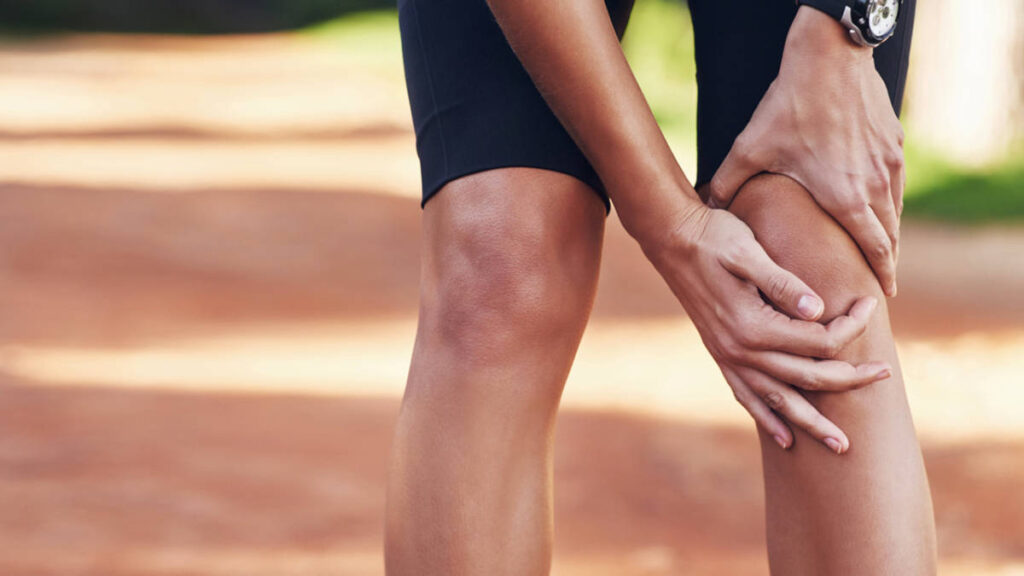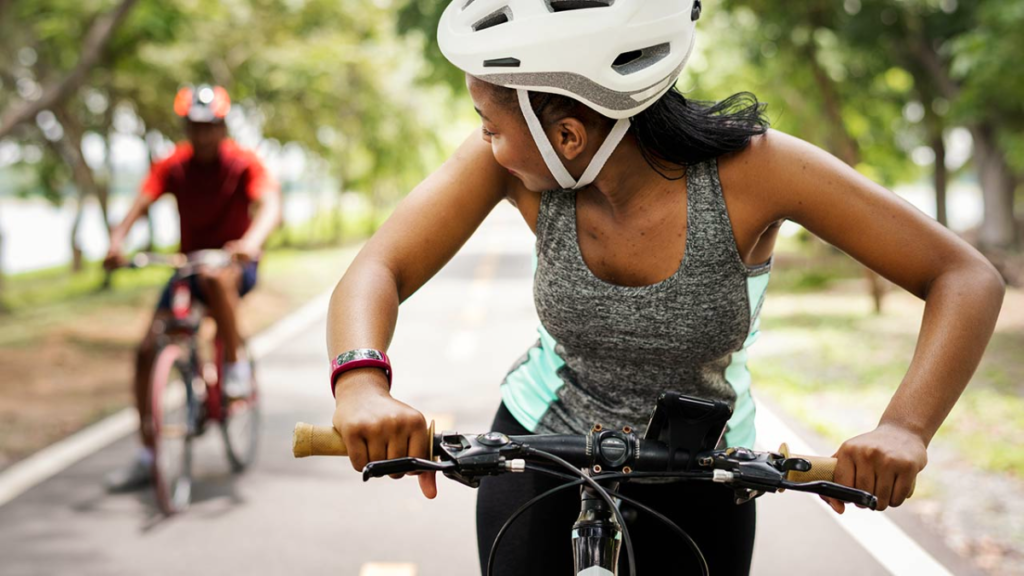Prevent and Treat Runner’s Knee, Are you an avid runner who is constantly dealing with pain and soreness in the knee? If yes, then you may be experiencing a runner’s knee. Runner’s knee is a common condition that affects runners and can cause pain and inflammation around the kneecap. In this blog post, we will provide an essential guide on how to prevent and treat this condition.

We will discuss the causes, symptoms, and treatments of a runner’s knee, as well as provide tips to help prevent it from happening in the first place. So, if you’re looking for an all-in-one guide on how to manage and prevent a runner’s knee, this is the post for you!
What is Runner’s Knee?
Runner’s knee is a common condition that can affect the knees of those who participate in running or other aerobic exercises. It is caused by overuse of the knee joint, which can lead to inflammation and damage. Fortunately, a runner’s knee can often be managed with rest, ice, and compression therapy. Additionally, a doctor may recommend strength exercises to strengthen the muscles that support the knee joint and reduce the chance of re-injury.
How does Runner’s Knee affect runners?
Runner’s knee is a common condition that affects runners. It is caused by overuse of the knee joint and can be a result of running too fast, too often, or not warming up properly. A runner’s knee typically affects the front of the knee and can cause pain when running, jumping, or walking. Treatment typically involves rest, ice, and stretching.
Signs and Symptoms of Runner’s Knee
The most common symptom of a runner’s knee is pain in the front of the knee, typically when running. Other symptoms may include swelling, redness, and heat around the knee. Runner’s knee is caused by overuse of the knee joint, which can lead to wear and tear on the cartilage and bone. Treatment typically includes rest, ice, and ibuprofen.
Pain with running or walking
If you are experiencing pain while running or walking, it is likely that you have runner’s knee. Runner’s knee is a common condition caused by overuse, inflammation, or trauma of the knee joint. Treatment for a runner’s knee typically involves rest, ice, and pain relief medications. If the condition is severe, surgery may be an option to help reduce pain and improve mobility.
Popping or grinding sensations
If you are experiencing popping or grinding sensations in your knee, this could be a sign of a runner’s knee. Runner’s knee is a common condition that can be caused by overuse or inflammation of the knee joint. Treatment typically includes rest, ice, ibuprofen, and physical therapy. If the condition is severe, surgery may be necessary. It may also be beneficial to adjust your running technique and wear supportive shoes to reduce the risk of developing a runner’s knee in the future.
Pain when sitting for long periods of time
If you experience pain while sitting for extended periods of time, it could be a sign of a runner’s knee. This condition is caused by repetitive use of the knee joint and can be treated with proper rehabilitation and medication.
Pain when bending the knee sign of a runner’s knee
If you experience pain when bending your knee, this could be a sign that you have a runner’s knee. Runner’s knee is a condition that is caused by overuse of the knee joint. The kneecap can become inflamed, and the surrounding tissues can also become injured. If you experience pain when bending your knee, it is important to see a doctor to determine the cause and to make sure that you are taking the proper steps to treat your condition.
Runner’s Knee Causes
Runner’s knee is a condition that most often occurs in people who are extremely active. It is a condition in which the kneecap (the large bone at the front of the thigh) rubs against the shinbone (the large bone at the front of the leg). This can cause pain and inflammation. Runner’s knee is most often caused by overuse, but it can also be caused by a condition called patellofemoral syndrome.
Overuse of Knee
Knee injuries are a common occurrence in runners, and overuse of the knee is a common cause. When the knee is overused, the cartilage that lines the inside of the knee can become worn and damaged. This can lead to pain and inflammation in the knee, and can eventually require surgery. To prevent knee injuries, runners should be careful not to overuse their knees and should seek out medical help if they experience any pain or inflammation in their knees.
Weak muscles
There are a number of factors that can contribute to a runner’s knee, including weak muscles. Weak muscles can cause the knee to hyperextend, or to bend beyond its normal range of motion. This can lead to pain and inflammation in the knee, and can ultimately lead to the development of the runner’s knee. To prevent a runner’s knee, it is important to focus on strengthening the muscles around the knee. This can help to prevent the knee from hyperextending and bending beyond its normal range of motion.
Poor running form
Poor running form can be a major contributor to the runner’s knee. When the knee is overworked and does not allow adequate time for recovery, the cartilage can become worn down and inflamed, which can result in the development of osteoarthritis.
Additionally, the improper running technique can cause the knee to over-extend or twist, both of which can cause pain and inflammation. Taking the time to learn the proper running form and giving the knees adequate rest can help to reduce the risk of developing the runner’s knee.
Treatment for Runner’s Knee
Rest is often the most effective treatment for a runner’s knee, but in some cases, medication may be needed to reduce pain and alleviate symptoms. For more severe cases, surgery may be an option, though it is not always necessary. No single cure exists for a runner’s knee, but there are several treatments that can help. You can also read about managing knee arthritis!
Rest to improve runner’s knee
In order to improve a runner’s knee, rest is key. If the knee is not given the time to heal, the injury can worsen. It is important to allow the knee time to heal properly so that the muscles and tendons can properly repair themselves. Additionally, the knee should be given time to adapt to the new motion. Rest is also necessary in order to allow the body to regenerate the cartilage.
Ice treatment
Ice is an effective treatment for a runner’s knee. It helps reduce pain and inflammation, while also aiding in the healing process. It is important to apply the ice directly to the skin, or wrap it in a cloth and apply it to the knee. The ice should be kept on the knee for a short period of time and should be moved around frequently to prevent numbness and stiffness. Additionally, it is recommended to use an ice pack or cold compress for more efficient cooling.
Stretching
There are a few different stretches that can be done to relieve the runner’s knee. The most common stretch is the quad stretch. This stretch can be done by sitting on the ground with your legs stretched out in front of you, then bending your knees and pulling your heels towards your butt.
Another stretch that can be done is the calf stretch. This stretch can be done by standing with your feet hip-width apart and your heels hanging off the ground. You then need to bend your knees and pull your heels towards your butt.
Strengthening exercises
Strengthening exercises to relieve a runner’s knee should include dynamic stretches, foam rolling, and strengthening exercises such as squats, lunges, and calf raises. Additionally, static stretching should be included in the routine to help prevent the formation of scar tissue and improve flexibility.
Moreover, exercises that strengthen the quadriceps, hamstrings, and gluteal muscles should be included to help support the knee joint and reduce stress on the knee. Finally, balance and proprioceptive exercises should be incorporated to help improve knee stability and coordination.
How to Prevent and Treat Runner’s Knee
There are a few things that you can do to help prevent a runner’s knee. First, make sure to warm up properly before running. This will help your muscles to loosen up and reduce the risk of injury. Second, make sure to stretch regularly. This will help to prevent tension in your muscles and prevent injuries. Finally, make sure to wear the right shoes. Wearing the wrong shoes can cause your knees to hyperextend, which can lead to a runner’s knee.
Proper running form
Running with proper form is essential for preventing a runner’s knee. Keeping the knee directly over the ankle, the back straight, and the arms close to the body are key components of proper form. Additionally, it is important to maintain a consistent stride length and to land on the mid-foot when running.
Gradually increasing mileage
Gradually increasing mileage over time is an effective way to prevent a runner’s knee. Starting with a slow pace and increasing it slowly helps build endurance, while the gradual increase in mileage helps avoid developing this condition. Doing so will ensure that your runs are safe and enjoyable.
Strengthening exercises
Runner’s knee is a common condition that can occur in people who participate in vigorous physical activity. The condition is caused by inflammation and swelling of the joint between the thighbone (femur) and the shinbone (tibia). The inflammation and swelling can lead to pain and a limited range of motion.
There are a number of exercises that can be done to prevent a runner’s knee. Some of the exercises that can be done include:
-Kneeling hamstring curls: This exercise targets the hamstring muscles, which are responsible for extending the knee.
-Hamstring curls with weights: Weighted hamstring curls can help to increase the intensity of the exercise and help to increase muscle strength and size.
-Lunges: Lunges are a great exercise for strengthening the quadriceps muscles, which are responsible for extending the knee.
-Squats: Squats are a great exercise for strengthening the quadriceps muscles and the muscles that support the knee.
-Lying leg curls: Lying leg curls are a great exercise for targeting the hamstring muscles.
-Stair stepping: stair stepping is a great exercise for increasing the intensity of the workout and for increasing muscle strength and size.
Who is at Risk for Runner’s Knee?
There is no one-size-fits-all answer to this question, as the risk of developing a runner’s knee may vary depending on a person’s age, exercise habits, and genetics. However, people who are at risk for a runner’s knee include those who are overweight, have a history of knee injuries, or have a family history of the condition. Additionally, people who are running on hard surfaces, such as concrete, may be at increased risk of developing a runner’s knee.
Athletes
Athletes are at a higher risk for developing a runner’s knee, according to a study published in the journal Arthritis Care & Research. The study found that athletes are three times more likely to develop a runner’s knee than the general population. The study also found that female athletes are more likely to develop a runner’s knee than male athletes.
Runner’s knee is a condition that affects the knee joint. It is caused by overuse and can be a result of running, jumping, or other activities that involve a lot of knee movement. A runner’s knee can cause pain and swelling in the knee joint. It can also lead to the knee joint is unable to move properly.
Athletes who are at risk for developing a runner’s knee should take steps to prevent the condition from happening. These steps include limiting the amount of time that they spend running and jumping, and using a knee brace when they are participating in these activities.
People with Weak Muscles
People with weak muscles are at a higher risk for developing a runner’s knee, according to a study published in The American Journal of Sports Medicine. The study found that people with weaker muscles are more likely to have instability in the knee joint, which can lead to the development of a runner’s knee. People with weak muscles may also be more likely to overuse their knees, which can also lead to a runner’s knees.
Individuals with Poor Posture
Individuals with poor posture are at a higher risk of developing a runner’s knee. A number of factors, such as poor muscle tone, poor biomechanics, and a lack of flexibility can cause poor posture. All of these factors can lead to a shortened range of motion and increased stress on the knee joint.
Poor muscle tone can be caused by a lack of exercise, obesity, or chronic pain. Obesity can lead to a decrease in muscle mass and a decrease in the number of muscle fibers. Chronic pain can also lead to a decrease in muscle mass and a decrease in the number of muscle fibers.
Poor biomechanics can be caused by a number of factors, such as a pronated foot, forward lean, and tight hip flexors. A pronated foot is when the foot is turned outwards, which puts more pressure on the ball of the foot and the surrounding tissues. A forward lean is when the individual leans forward excessively, which puts more pressure on the knee joint. Tight hip flexors can cause the hips to rotate inward, which puts more pressure on the knee joint.
There are a number of things that an individual can do to improve their posture and reduce their risk of developing a runner’s knee. One thing that an individual can do is to increase their exercise routine. Exercise can help to increase muscle mass and decrease the number of fat cells. It can also help to improve the flexibility of the muscles and tendons around the knee joint.
Another thing that an individual can do is to improve their biomechanics. Improving the biomechanics can help to reduce the amount of pressure that is put on the knee joint. It can also help to improve the range of motion of the knee joint. Finally, improving the flexibility of the hips and hamstrings can also help to reduce the amount of pressure that is put on the knee joint. Also, check out these 15 tips for managing joint pain!
Overweight Individuals
Overweight individuals are more likely to get a runner’s knee, a condition that can cause pain and swelling in the knee. The condition is caused by the overuse of the knee joint, which can cause the cartilage in the joint to wear down. Overweight individuals are more likely to have tight muscles and ligaments in the knee, which can also lead to a runner’s knee. Treatment for the runner’s knee typically includes rest, ice, and ibuprofen.
Poorly Fitted Shoes
Poorly fitted shoes are a high risk for runners’ knees. A study published in the American Journal of Sports Medicine found that runners who wore shoes that were too tight or too large were more likely to experience knee pain. In fact, the study found that even shoes that fit well in the width and length departments were associated with an increased risk of knee pain in runners. If you are experiencing knee pain, it is important to seek out a professional to help you find the right pair of shoes.
Conclusion
Runner’s knee can be a difficult and painful condition to manage and prevent. However, with the right knowledge and preventive measures, you can reduce your risk of developing a runner’s knee in the first place and effectively treat the condition if it does occur. This includes strengthening the surrounding muscles, finding the right running shoes, avoiding uneven surfaces, and gradually increasing your running intensity and duration. If you already have a runner’s knee, you should focus on stretching and strengthening your quadriceps, applying ice to reduce swelling, and taking medication to reduce pain and inflammation.
With the right guidance and treatment, you can reduce your risk of developing a runner’s knee and effectively treat the condition if it does occur. If you find these blogs helpful, please share this with your loved ones and friends. You are also welcome to visit our other related blog for more tips and recommendations.


